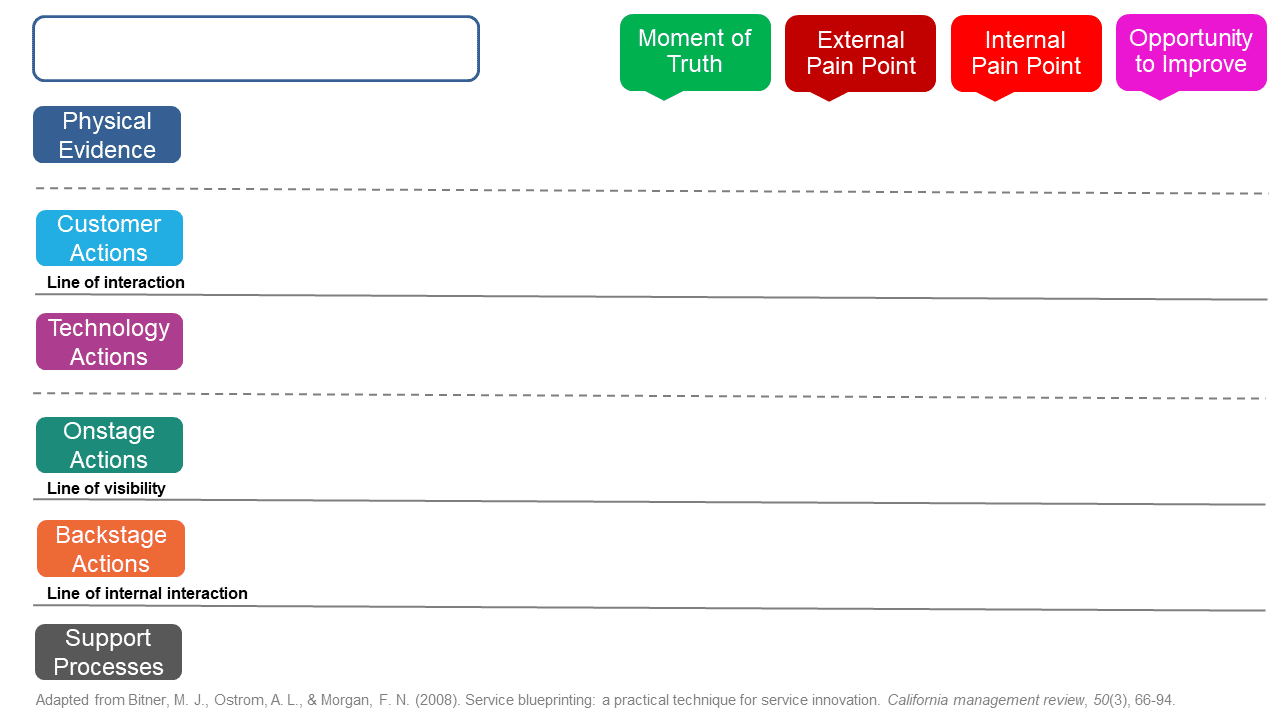9 Service Blueprinting

NOTE: We recommend that you seek advice and support before you start on a service blueprinting jounrey. Here is an overview of the process.
Service Blueprinting is a technique that helps service engineers to design, evaluate and implement service innovations and enhancements.
It was initially introduced as a process control technique for services that offered several advantages.
It is more precise than verbal definitions of service design and delivery. It can solve problems in advance, and identifies failure points in a service operation.
Its components are built completely around the customer. What are the elements with which the customer interacts?
- the customers’ experiences and interactions with people and processes
- the ‘hidden’ elements of the service experience that are essential to the delivery overall.
The crucial element of the Service Blueprinting Process (SBP) is that the tool uses the customer, client or end user, as the continual focal point and beginning of each step in the service design process. The belief is that the organisation should align its people, processes and resources so that all are customer facing and acting to support each other in the service design and delivery system (adapted from Bitner, Ostrom & Morgan, 2008).
The Value of Service Blueprinting
The crucial element of the Service Blueprinting Process (SBP) is that the tool uses the customer, client or end user, as the continual focal point and beginning of each step in the service design process.
The belief is that the organisation should align its people, processes and resources so that all are customer facing and acting to support each other in the service design and delivery system (adapted from Bitner, Ostrom & Morgan, 2008).
The organisation’s values, mission and vision can be readily shared and understood by those who must deliver, greatly enable people in their ongoing roles as service providers.
As the service development process progresses:
- The SBP becomes more concrete.
- Customers and employees can ‘see’ and interact with it.
- Roles can be clarified.
- The service process is specified.
- Equipment, quality, and cost factors are explored.
- An actual service takes shape.
- Employees, customers, and managers can participate in its design and potential delivery.

This tool is a crucial element of developing an effective business process mindset in organisations. Business processes that are clearly focused on chosen and desirable outcomes that fit with the organisation’s values, mission and vision, and can be readily shared and understood by those who must deliver, greatly enable people in their ongoing roles as service providers. Such processes also allow individuals, teams and organisations to more readily explore failures and successes, and enact innovations both incremental and substantial.
Here an image of one outcome of a service blueprinting activity.

